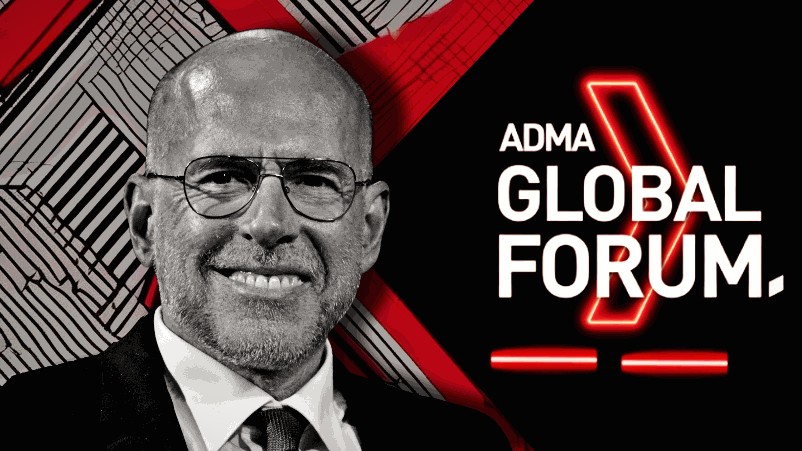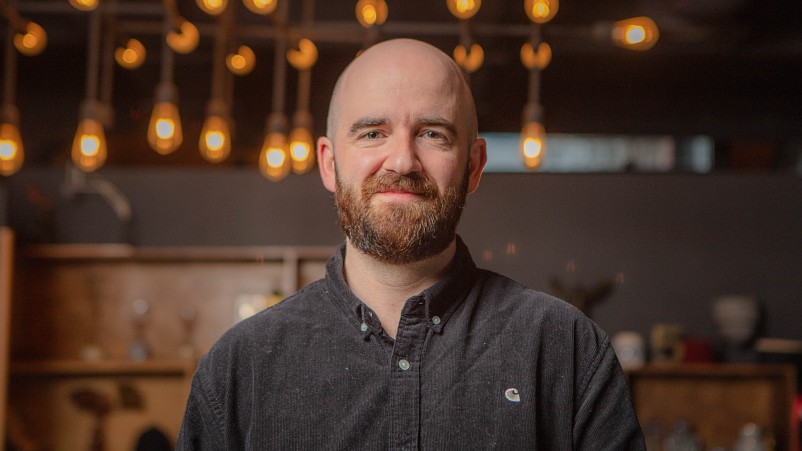Galloway and Ritson on CMO extinction and how to avoid it; why TikTok is about to usurp Meta, one streamer will collapse, and looming AI litigation

Scott Galloway says big tech is about to get broken up, Bytedance will usurp Meta within two years and that at least one big streaming service will soon go pop. Meanwhile, he stands by last year's cheery prediction of the death of the CMO by 2025 and, alongside Galloway's keynote at ADMA's Global Forum, virtual professor Mark Ritson offered some clues as to why: Only a third know what marketing's foundational four Ps actually stand for, and just one in six know how to calculate return on ad spend, per a poll he conducted with ADMA. But Galloway offered some tips to CMOs looking to survive his oft-prophesied extinction event – and likewise for publishers now getting fleeced by large language models.
Death by keynote
We’re six months off Scott Galloway’s prediction of the death of the CMO to Suncorp’s EGM of brand and marketing, Mim Haysom at last year’s ADMA Global Forum. So it wasn’t surprising the marketing chief couldn’t help herself at this year’s event and asked the professor of marketing from NYU if he stuck by his prediction.
The answer? Well, mostly. The CMO who’s driven by only owning brand as some esoteric idea or advertising-only pursuit is certainly going by the wayside, according to Galloway.
“The CMO in the 1990s would effectively decide they were keepers of the brand, and they were the only people to understand that, and they’d hire and fire agencies, and think about a media brand,” Galloway told Haysom and ADMA attendees. "It made sense – the majority of shareholder value in 1990s was the following algorithm: Come up with a media plan for a salty mediocre product, sugary drink or car, then wrap it in amazing brand codes of youth, European elegance, Australian or American masculinity, then pound away at those associations using these incredibly cheap channels called broadcast media.
“Then something happened: Digital created this new-age product innovation and all of a sudden, you had 10x better products. Google is a 10x better product. People no longer need to defer to the weapon of mass diligence called brand – I will stay in a Four Seasons because one, someone else is paying for it, and two, they’re always neat. But with Tripadvisor and Google and my social graph, I can stay in the Nobu Hotel in Chicago because it has this cool roof and I like to hang out with people who are younger and better looking than me.
“I no longer need to defer to the brand.”
Whether you agree with Galloway on brand’s importance or not (and plenty of other speakers at ADMA Global Forum emphatically did not), the argument marketers need to get beyond promotion and advertising and better embrace all aspects of marketing – most especially product, in the professor’s view – isn’t exactly new food for thought.
But it’s potentially applicable to more than a few marketing professionals, if you take at face value survey figures revealed by Mark Ritson at the conference suggesting most marketers remain in the weeds of execution and promotion and barely get a whiff of anything else.
In a poll conducted by Ritson and ADMA, the pair found only 32 per cent of Australian marketers actually know what the full 4Ps of marketing stand for (product, price, promotion and place, just to be clear). There were other technical ‘basics’ of marketing respondents also showed whopper knowledge gaps around, including how to calculate ROAS (only 16 per cent know the formula of revenue divided by cost), or that owned and earned are the other forms of media you can engage with besides paid (21 per cent).
Not just advertising...
It’s not all their fault. As Ritson told attendees, only 32 per cent of Australian professionals with ‘marketing’ in their job title have any formal training or qualification in the marketing discipline, according to LinkedIn supplied data. He also noted fewer than half of marketing leaders in the US and UK are involved in pricing today, and at least 20 per cent don’t get close to positioning, according to The CMO Survey results.
By that score, and if we don’t do more to lift our game across marketing – not just advertising – Galloway’s prediction of the death of a certain kind of CMO could be more feasible than you might think. ADMA and Ritson are clearly both working to try and rectify the problem through training, education and knowledge-sharing programs and initiatives, including ADMA’s latest capability assessment offering, the Capability Compass, launched at Tuesday’s event.
There are equally a lot of Australian CMOs who certainly do go beyond promotion and should be applauded for it. There are marketing and customer combined leaders also doing a great job of bringing strategic, commercially savvy thinking to what marketing and brand can truly deliver.
But back to Galloway and his views on whether CMOs will survive. Some will, he said.
“The CMOs to survive have done a couple of things. One, they realised their jobs are to figure out a way to invest around the product. That’s not necessarily product itself, but the service, how it’s distributed, vertical, how you leverage tech to unlock things, how you create a consumer base that’s passionate and can communicate with you more efficiently because of channels – whatever it might be,” he continued. It’s not just product either, but place and arguably pricing that are coming into play here.
“The CMO to survive is going to be more about the supply chain,” he added – consistent with what he told the forum last year. “But I think the traditional CMO is going away. There’s some evidence the number of CMO job titles on LinkedIn has decreased… It’s like being a Lieutenant in the US Army, where your life expectancy is only 12-14 weeks. The only position more dangerous than CMO right now is DEI [diversity, equity and inclusion].”
And why are DEI leaders in trouble? Well there’s a whole other line of argument, including the fact 70 per cent or more of us would now fit into these ‘minority’ groups today, as Galloway attests. Haysom, after asking Galloway why, moved on.
Streaming media predictions
Galloway’s presentation outside of the CMO survival / revival argument was otherwise full of predictions about the media, big tech and AI.
One was that we’ll see the first streaming service shut down this year as a return to rebundling, cost efficiency and customer satisfaction contribute to a crackdown on streaming services we’re willing to subscribe to. Galloway compared many streaming companies and the economic set-up right now to the old days of the US automotive market, and saw an increasing push towards globalisation of content.
Adding to this dynamic is TikTok, which has a bigger creative pool and ecosystem than all streaming services employ in aggregate (500,000 versus 1.7bn users). As well as predicting TikTok’s parent company, Bytedance, would indeed sell off to private investors off the back of US legal and regulatory action, Galloway also saw TikTok entering the music streaming business, adding pressure to that ecosystem and especially to Spotify.
Galloway pointed out Bytedance has grown 50 per cent year-on-year. On that trajectory, it’s likely to be bigger than Meta in 24 months.
Then there’s who is really pulling the numbers outside of TikTok. Galloway noted YouTube is a bigger streaming platform than Netflix, although Netflix has lower churn rates of 2-3 per cent, versus up to 8 per cent on Apple. This has meant other streaming providers are having to reinvent every 12 months due to churn, while Netflix can reinvest in content and marketing more, developing a network effect and “essentially running away with it”.
Galloway further posited whether Google could indeed spin out YouTube given its size and scope.
Given these factors, a complementary prediction as these channels vie for dominance is a greater emphasis on sports, sports partnership and Gen AI, versus linear TV, Hollywood creatives and ad supported media.
While some of the streaming laggards will rebound, Galloway spied a rebundling of services, comparing it to cable.
“We are going to see a lot of cost cutting and consolidation,” he said. “There will be more Netflix and Disney because of its incredible positioning around family, but everyone else is either consolidating ... I think we’ll see our first streamer decide to shut down this year.”
The lack of choice on both TikTok and Netflix got a mention too. “There's one choice, because the TikTok algorithm knows you better than you know itself,” he said. “The biggest mistake we make in marketing is believing choice is a good thing. It isn’t, choice is a tax. Consumers don’t want more choice they want to be more confident in the choice presented. At the end of the day, that’s the value proposition of TikTok.”
Galloway added 14-18-year-olds are spending more time on TikTok then they’re spending on YouTube and Netflix combined, which is getting 78 signals every minute and immediately calibrating to what you most enjoy to keep you most engaged.
Big tech breakup
Big tech was another of Galloway’s focal points. He positioned Google being found guilty of being a monopolist in August for its search distribution deal with Apple as the biggest decision so far this year worthy of more attention. If the Democrats stay in the White House, Galloway believes it will mark “the beginning of the breakup of big tech”.
“A judge deciding that Google is guilty of essentially monopoly abuse will give a lot of jurisdictions more confidence to after these companies. What will be interesting is, what will the remedy be?” he asked. “The fines can't be big enough. I don't know if it's going to be a break-up or some sort of option screen where you get to pick your search engine. But there is sort of the beginning of big tech break-up, which I've been predicting for about 10 years now and been wrong so far. It looks at it as if it is finally happening.”
AI: Litigation incoming
AI likewise got a lot of Galloway airtime. He described it as the "refinery" for the vast amount of data (oil) businesses have today they can’t “turn into petroleum”. While pointing out four of five unicorns are AI startups today, Galloway sees a bubble emerging around AI. He’s not alone in that view.
With US$2-3 trillion dollars in market capitalisation and AI companies currently trading at 100, 150 times revenues, that’s not sustainable.
Don’t be fooled there’s diversity of players in there either, Galloway said, highlighting the big traditional tech giants are well entrenched in the AI play. “The ecosystem is remarkably non-diverse,” said Galloway, who also noted two-thirds of AI investment was from three firms: Google, Amazon and Microsoft.
There’s litigation on its way here too. Galloway hoped – rather than was convinced – content providers would bind together and “sue the shit out of large language companies”, noting there is an opportunity for the traditional content players given the voracious appetite of LLMs for content.
“I think these companies are going to find that they're going to be in a position to license or create another stream of very high margin revenue by licensing their content,” he said. “Now, as usual, they're idiots, and they've decided 'I'm very special, and I'm going to negotiate unilaterally with these guys', instead of binding together and speaking with one voice and getting a much bigger deal. I was on the board of the New York Times for a couple years, and my first board meeting, I suggested – this was in 2006 – 2007… that we just shut up Google that they are essentially taking our content, slicing the cheese finer, finer, giving us $0.03 on the dollar they're producing. This is that moment again.
“Somebody needs to create a consortium of all the biggest media companies and speak with one voice to these LLMs.”



